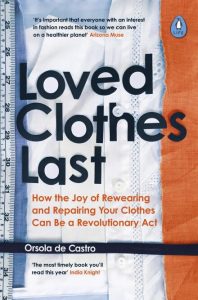The clothes I don’t wear
‘I have my cupboard full of clothes but nothing to wear.’ We all know the feeling and occasional boredom of an uninspiring wardrobe. Did you know that at least 50% of the clothes we have we never wear? That 80% of the time we wear 20% of the clothes we have. The statistics show figures, that we can’t ignore and should reflect on.
The fashion industry, especially fast fashion, has been heavily criticised. Clothes production contributes 10% to global pollution. The large carbon footprint with 1.7 billion tons of CO2 per year is higher than France, Germany, and the UK produce together. Large amounts of clothes overproduction end on landfills to not compromise the brands’ value. Fast fashion brands like Boohoo, Urban Outfitters, and Don’t Be Misguided are first on the list of wasteful production. The prediction is that pollution will increase by 60% in the next decade, a scary thought. However, we can change our behaviour and attitudes regarding clothes and make a difference in more sustainability in fashion.
Maximise your Wardrobe
It is time to tidy up! Marie Kondo, the Japanese organising consultant, and author suggests holding an item in your hand to understand whether it still gives you joy. If not, you should discharge, donate, resell or pass it on to somebody. The items you keep should be cared for and looked after well.

‘The beauty of caring for your clothes, Orsola de Castro implies, is that fostering a deep connection with them will turn you away from mindless consumption – since isn’t it more fun when you truly care about what you wear?‘ ‘Loved clothes last’, written by Orsola de Castro Clothes’ caring starts with washing, folding, storing, and maintaining it. Clothes you care about and love should be fitted perfectly, nurtured, repaired, and mended.
D&A offers support by offering a free 30-minute consultation to explore how together we can activate clothes you own but currently don’t wear. Bring us a selection of clothes that have potential – we can give ideas and indications of costs. If together we can genuinely save two or more items in your wardrobe from the incinerator or languishing in a charity shop – you will receive 20% off all these alterations. Just quote – help me save these garments – in your email booking.
Swapping & Hiring
Clothes swapping and hire are possible ways of enhancing your wardrobe with the environment in mind. But is it actually more sustainable? It might work for evening and party wear (btw, we offer reversible clothes alterations for hired garments), but clothes hire undisputable has disadvantages.
Conscious clothes shopping 
We believe conscious handling of your existing wardrobe and the good decisions when you shop for clothes is the best contribution every single one of us can make.
Local is always better than online – no delivery and returns, no carbon footprint, also supporting local retailers. Less is always more – choose wisely, and rather than buy many, buy one item you love.
Ask four questions before you buy: Do you wear in the next four weeks? Does it add value to your wardrobe? Do you have a similar item? Is the garment timeless and can be worn for a long time?
Buy from fashion brands that have sustainability and ethical production as part of their core values.
Vivienne Westwood is an ambassador for more sustainability in fashion but has been criticised for continuing to produce nine collections per year. Some brands like Balenciaga changed, reduced their collections and explore ways of less wasteful fashion approaches.
Interesting stats – did you know that?
- 50% of bought clothes never get worn and thrown away with tags on?
- 56% of clothing are an impulse purchase, often being blinded by the prospect of a bargain
- The average woman has 103 items of clothes – wears 10%, considers 21% as unwearable, 33% as too tight, and 24% as too loose.
- 80% of the time we wear 20% of our clothes
Second-Hand retail & online retail
- Ebay
- Vestiaire Collective/designer clothes – www.vestiairecollective.co.uk
- The Vintage Bar/designer clothes – www.thevintagebar.com
Clothes Hire
- Rotaro – www.rotaro.co.uk
- Nuw – www.thenuwardrobe.com
- Hurr – hurrcollective.com
Selling your designer clothes
- Cudoni – www.cudoni.com
- Vestiaire Collective – www.vestiairecollective.com

